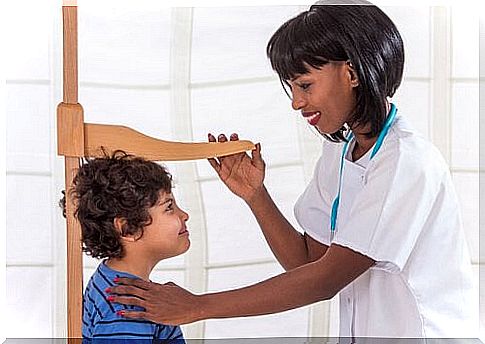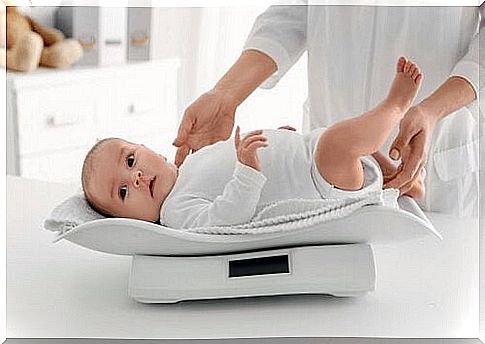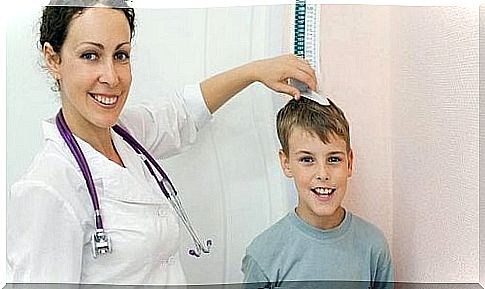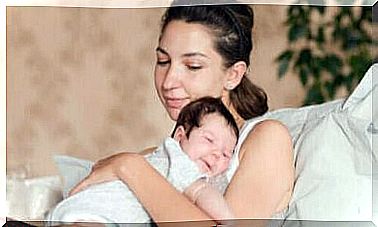Growth Hormone Deficiency In Children

Growth hormone deficiency in children or growth hormone deficiency is a relatively rare childhood disease.
It is caused by a slow production rate of this hormone in the pituitary gland. This is located at the base of the skull. It can also be caused by, for example:
- a brain damage
- the presence of a tumor in this part of the brain
- exposure to radiation
There are also other diseases that can lead to growth hormone deficiency in children. This is not a hereditary condition.
In many cases, doctors cannot determine the cause. In some children it occurs from birth. Growth hormone deficiency can occur along with other congenital deformities, such as a cleft lip or cleft palate.
An absence of growth hormones may also be related to other endocrine disorders, such as a lack of gonadotropin, thyrotropin, or vasopressin. These hormones regulate other important biological processes.
Regular medical checkups are the best way to detect a growth hormone deficiency early and then take appropriate action.
Parents and caregivers should pay attention to the warning signs of this deficiency. Early diagnosis is essential for proper treatment.
Possible signs of growth hormone deficiency in children
The most obvious symptom of a growth hormone deficiency is short stature.
Children with GHD tend to be smaller than others in the same age group. Slow growth affects the shape of the face and limbs and leads to a stocky body type.
People with growth hormone deficiency generally have poor muscle tone and in men the penis can be small.
Low glucose levels in the bloodstream can lead to a delay in the onset of puberty.
Another point to pay attention to is the child’s self-confidence. For example, feeling physically different from friends and classmates can make children feel extremely vulnerable.

Diagnosis of Growth Hormone Deficiency in Children
As part of regular medical checkups, your pediatrician will monitor your child’s growth using growth curves. This type of analysis can help detect a problem with growth hormones.
One of the first tests doctors use to confirm a diagnosis of growth hormone deficiency in children is an X-ray. This can determine the bone age of the patient and how fast his bones grow.
There is another examination that the doctor is likely to perform. This is a blood test to check the level of IGF or insulin-like growth factor 1.
For example, one way to treat this condition is by stimulating the body to produce growth hormones. This is done by administering drugs that stimulate the pituitary gland.
Your child’s specialist will then analyze his body’s response to the hormone therapy.
Other analyzes include tests to determine the body’s production of gonadotropin-releasing hormone (GnRH).
Clinical treatment of growth hormone deficiency in children
When growth disorders are caused by a hormonal deficiency, they can be treated with drugs. Specifically, a synthetic version of the hormone is administered through a subcutaneous injection.
The medical specialist determines the dose as well as the frequency and type of hormone therapy. However, in some cases, treatment must be continued into adulthood.
Children with GHD often grow less than 5 centimeters per year. With the right treatment, they can grow up to 10 centimeters in the same period.
While side effects can occur, they are generally mild to moderate, while the effects of hormone therapy are great.

Examples of these side effects include:
- Breast tissue growth in men
- scoliosis
- Muscle and joint pain
- Inflammation of the arms and legs
- Headache
- Mild hypothyroidism
More serious side effects are much rarer. These include headache with radiating symptoms, pancreatitis and problems with the hip bones.
However, early diagnosis is the best way to get good results from growth hormone therapy.
It is important for doctors to discover and treat this condition early in a child’s life. In this way, children with a growth hormone deficiency can often reach a normal height by the time they reach adulthood.








